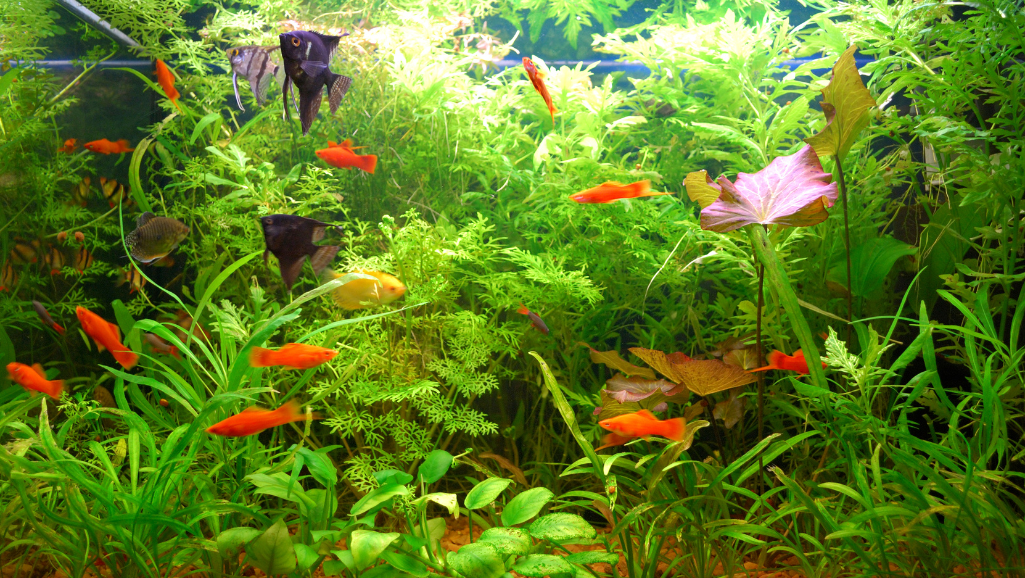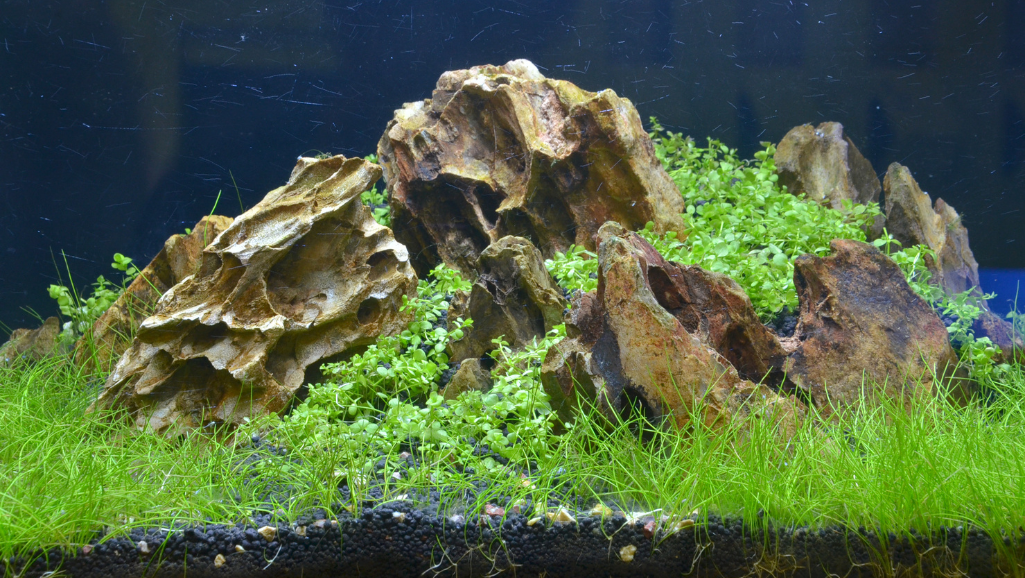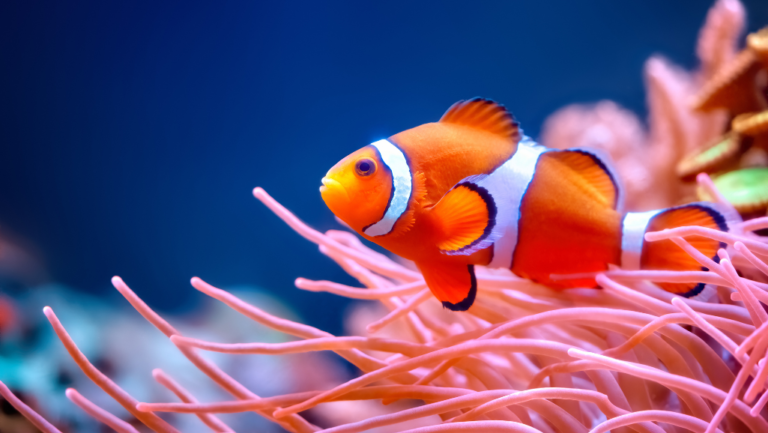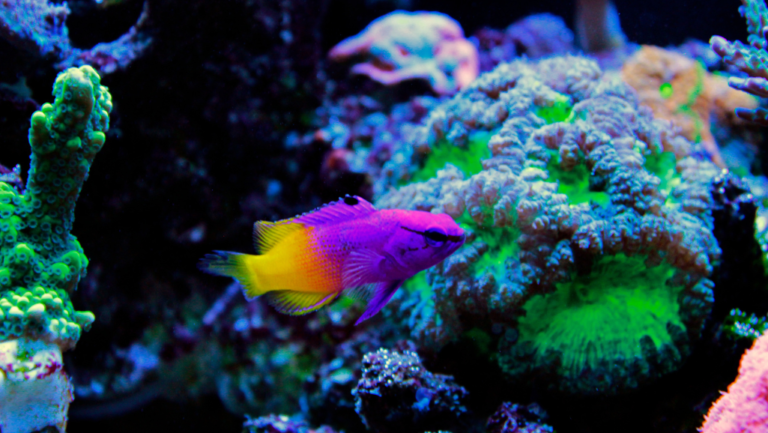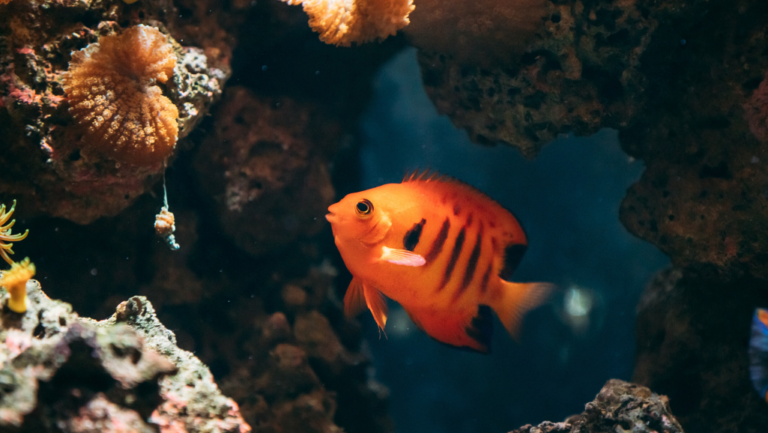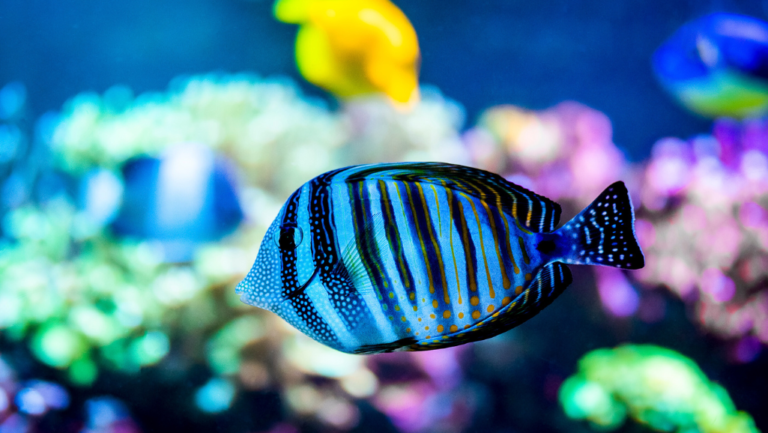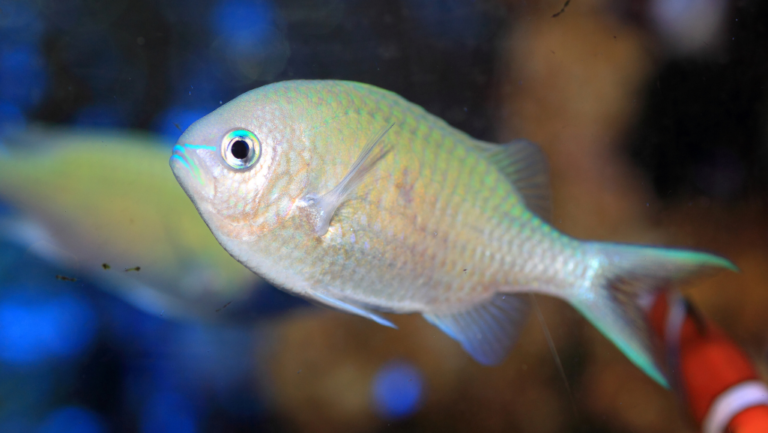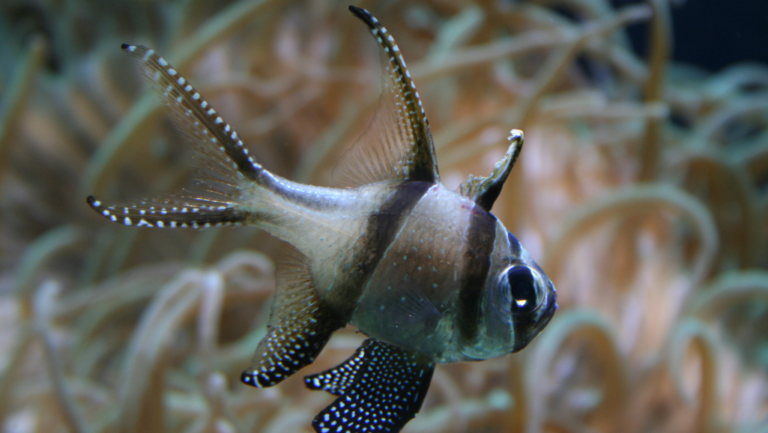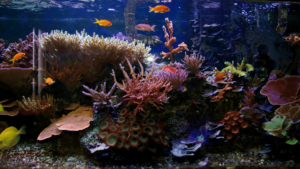Bright, bold, and beginner-friendly, the pajama cardinalfish reaches about 3.3 inches (8.5 cm) and is instantly recognizable by a dark vertical waistband, red eyes, and orange-red spots.
This small marine fish thrives in calm reef-like displays and is widely distributed across the western Pacific, from Java to Fiji and the Great Barrier Reef. It schools peacefully and rests in shaded overhangs by day, becoming active at dusk.
Hobbyists will find this species hardy and well suited to a marine aquarium. A minimum 30-gallon tank with hiding places supports small groups, and evening or low-light feedings improve food uptake.
Captive-bred stock adapts quickly, accepts varied foods, and helps build a sustainable hobby. Learn practical setup and care tips, plus how males mouthbrood eggs for 8–31 days, so your tank becomes a vibrant, lasting mini-reef. For reliable captive-bred options, see available stock at LiveAquaria.
Key Takeaways
- The pajama cardinalfish is a hardy, small reef species ideal for beginners.
- Recognize them by a dark waistband, red eyes, and spotted rear half.
- Keep groups in a 30-gallon+ aquarium with shaded overhangs.
- Feed during low light; captive-bred fish adapt faster and are recommended.
- Males mouthbrood eggs for roughly 8–31 days—breeding is achievable with basics.
Meet the pajama cardinalfish: identification, behavior, and origins
Sphaeramia nematoptera is a compact reef species with unmistakable markings. Adults reach about three inches and typically live two to five years.
How to recognize Sphaeramia nematoptera:
- Silvery body with a greenish‑yellow face and large red or orange eyes.
- A bold, dark vertical mid‑body “waistband” and many red/orange spots toward the tail; juveniles show darker dots that redden with age.
- Males sometimes display a slightly longer second dorsal fin, but pairs are best identified by courtship and bonding.
Origins and natural habits
Native to the tropical Indo‑Pacific, this species ranges from Java and the Philippines to Tonga, Fiji, the Ryukyus, and the Great Barrier Reef. It lives mostly between 1–14 meters in sheltered bays and lagoons.
Daily rhythms and social life
By day small groups school among branching Porites and cling to shaded overhangs. At dusk they disperse to forage over sand and rubble, so timing feedings around lights‑out matches their natural night activity.
Set up your marine aquarium for success: tank, lights, and daily care
Choose a roomy tank and sculpt shaded caves to mirror the calm reef zones this species prefers. A stable marine aquarium makes daily care simple and rewarding.
Right tank and aquascape
Start with at least a 30-gallon tank to house a small school. Larger volumes are better if you plan more fish or a fuller reefscape.
Stack live rock to form shaded overhangs and gentle caves. These hideouts reduce daytime stress and encourage natural resting behavior.
Lighting and flow
Lower light levels and moderate, indirect flow suit these calm fish. Aim for soft illumination and pockets of low current to create relaxed zones.
Community planning
Stock with peaceful reef-safe species. Avoid fin-nippers and aggressive feeders that will harass a small group during feeding time.
Feeding routine and timing
Feed 2–3 times daily, rotating flakes, micro-pellets, frozen mysis, and finely chopped seafood. Offer live brine or mysis shrimp occasionally to stimulate appetite.
“Target feed just before and after lights-out to match their crepuscular foraging and help timid fish eat confidently.”
Water quality habits
- Perform small, regular water changes and monitor temperature and salinity.
- Clear uneaten food promptly and check skimmer/filter socks daily.
- Keep filtration steady; a stable system rewards you with healthy behavior and color over years.
Tip: Choose captive-bred individuals when possible. Captive-bred cardinals settle faster, accept prepared foods readily, and adapt well to community tanks.
Breeding pajama cardinalfish: step-by-step mouthbrooding and fry rearing
Spawning usually begins at dusk, with the pair becoming focused and the male quickly accepting and carrying the fertilized eggs in his mouth.
Track the incubation clock: expect hatching around day 7–8. Many breeders collect the mass on day 8 for reliable results. Some broods continue into week four, but day nine often shows few eggs left.
For collection, gently net the male on day 8 and allow him to release the egg mass into a container. Avoid exposing eggs to air and move them quickly to a prepared incubator.
Larval system: a 5-gallon tank with blacked sides, heater, aged sponge filter, and a slow drip exchange to the main reef keeps water stable. An egg tumbler built from 1.5″ PVC and 800‑micron mesh works well; use a fine airstone and gentle tumble.
Feed rotifers immediately and tint water with Nannochloropsis paste (~1 cc/5 gal twice daily). Enrich rotifers with HUFA from day 5, add HUFA-enriched brine shrimp around day 12, then overlap 5–7 days before introducing a fine dry larval diet in week 3.
Metamorphosis completes near day 30–36. Move juveniles to a grow-out tank at 7–8 weeks and begin chopped mysis shrimp. Separate bold and timid fry to improve overall survival.
“Keep an ammonia badge, maintain an aged sponge filter, and leave a small lamp on 24 hours to support continuous hunting for newly hatched fry.”
- Pairs may spawn every 2–3 weeks; refine your routine for better survival.
- Control levels and siphon debris daily to protect fragile fry.
- Gentle, timely feeding gives the best growth rate for these cardinals.
Conclusion
Conclusion
With steady routines and mindful tank design, you can enjoy years of healthy, schooling marine fish.
Keep it simple: low light, calm flow, and targeted feedings near lights-out encourage natural behavior and improve feeding success.
Offer a varied diet — frozen mysis, finely chopped seafood, and quality pellets — and watch growth and color respond over time.
Breeding is practical: observe the male and its mouth brooding, follow timed rearing steps, and separate fry when needed to reduce aggression.
Choose captive-bred stock when possible for ethical, resilient stock. For a practical care guide, see keeping the pajama cardinalfish.

